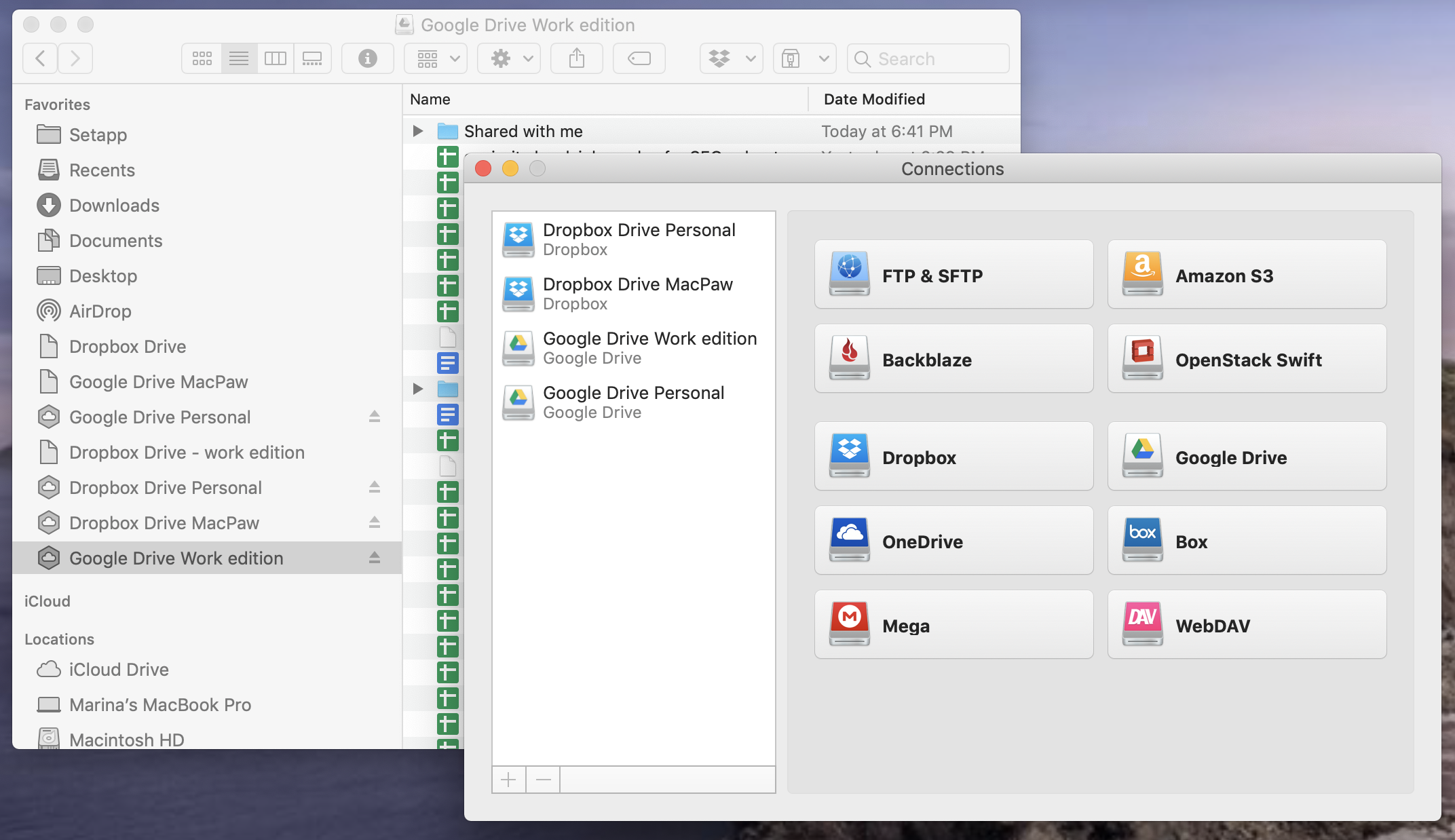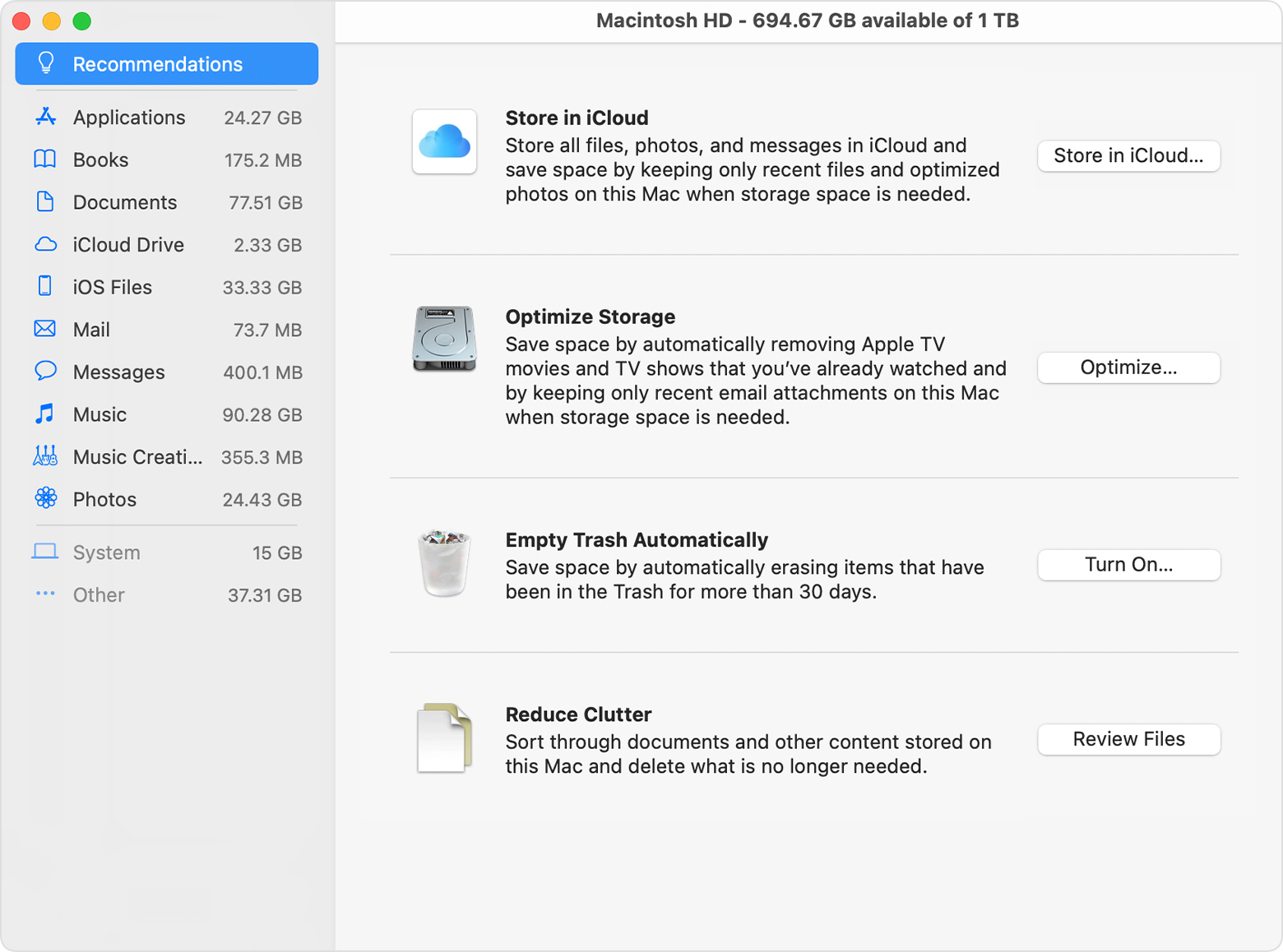Check Your Disk to See What is Taking Up Space and Find Large Files. To free up disk space, it’s helpful to know exactly what is using disk space on your Mac. A hard disk analysis tool like Disk Inventory X will scan your Mac’s hard disk and display which folders and files are using up the most space. You can then delete these space hogs to. To find these options, click the Apple menu then About this Mac, select Manage, then Storage Tools. There are four options: Store in iCloud-Free up space on your computer by storing files in iCloud. This option moves items off your storage drive and into your Apple ® account in the cloud. Optimize Storage-This option deletes movies and TV. No.6 Free Mac cleaner: Disk Drill. Disk Drill is one very popular free Mac cleaner app. Actually, it is a professional data recovery tool for Mac, which carries some disk cleaning functions. It has the capability to analyze Mac storage space, locate unused, large, and duplicate files and so on. Save space on your Mac by storing your content in iCloud, using built-in tools to find and remove large files, or manually deleting apps, files, and more. How to clear disk space in Windows and Mac. The simplest way to free up disk space on PCs and Macs is to empty the recycle bin, clean the disk, delete temporary files, uninstall applications, and use a hardware junkware removal cleanup tool. The garbage generated by many programs can be overwhelming.
When the disk on your Mac is almost full, you may receive the above warning message and find that your Mac runs slower than usual. You can then take the easy steps below to check the disk space on your Mac, and may need to use the 10 methods provided in the second part to free up disk space.
Let’s get started.
How to check disk space on Mac
You can simply follow these steps:
- Click the Apple Icon, and select About This Mac.
- Click Storage. And you’ll see how much free space is available and what are taking up the used space.
If you are running out of disk space, you can try the methods below to free up some.
How to free up disk space on Mac
Method 1: Use recommendations
A quick fix would be to click the Manage button to use recommendations for optimizing your storage. You’ll see fewer options if some of them are already enabled.

Method 2: Use cloud storage
Besides iCloud and iTunes, you can also use other cloud storage tools to store your content and save disk space on Mac. There’re many cloud storage applications available on the Web or inside the Mac App Store. Among them, you can try AnyTrans.
AnyTrans breaks the sync boundaries and builds highways between all your devices. With it, you can transfer your data and files across iOS devices, Android mobiles, PC/Mac, and cloud storage. Freely, flexibly and unlimitedly.

Method 3: Use external drives
You can also move big and infrequently used files (e.g. movies, photos and audio) to a USB drive with a large storage capacity, say, 500GB, to effectively free up space on your Mac.
Method 4: Delete downloads
As you may frequently download files from browsers and mail, the Downloads folder is probably taking up several Gigabytes of free space. So you can navigate to the path below to delete downloads that are not needed any more to free up your disk space.
Check Free Space On Macbook
Machintosh HD > Users > Current User > Downloads
Method 5: Clear caches
Caches in apps and browsers can pile up and occupy a good portion of disk space over time. So it’s a good idea to periodically clear caches and free up disk space. To do so, you can:
- In the menu bar, click Finder, then select Go.
- Click Go to Folder.
- Type ~/Library/Caches.
- Delete the files or folders that’re taking up the most space.
- Type /Library/Caches.
- Again, delete large folders/files.
Method 6: Remove logs
In the Library folder, you can also find the Logs folder, which stores some temporary files of the system, apps and mobile devices. You can remove unnecessary files/logs in it to free up space.
Method 7: Delete iTunes backups
If you often back up your iPhone with iTunes, the backups may take up much space on your Mac. To have a check, you can go to iTunes > Preferences > Devices.
You can then move the content to the cloud, then delete all previous backups on your Mac.
Method 8: Remove duplicate files
How To Free Up Space On Mac
In iTunes, there’re other files you can remove to free up disk space — duplicate items.
Macbook Air Disk Space
- Open iTunes.
- Click the View tab, then select Show Duplicate Items.
iTunes will show you a list of duplicates. You can then check and remove the unneeded.

Method 9: Remove software updates
If you have updated your iPhone or iPad via iTunes on your Mac, you’ve left update file(s) on the system. After the update, these files are not needed any more, and you can follow these steps to delete them.
- Click the Finder tab > Go > Go to Folder.
- To delete iPad update files, type ~/Library/iTunes/iPad Software Updates.
- To delete iPhone update files, type ~/Library/iTunes/iPhone Software Updates.
Method 10: Uninstall unneeded apps
Last but not least, you can consider removing unused applications on your Mac. It’s a great way to free up disk space.
You can use the free OS X tool AppCleaner or AppTrap to clean uninstall apps. Just drag and drop the app you want uninstalled into the tool.
Then select the files you want to be removed along with the app, and empty the trash and the uninstallation process is complete.
Just have a try now!
Check Free Space On Mac
Feel free to leave a comment below to share your results or any other suggestions.